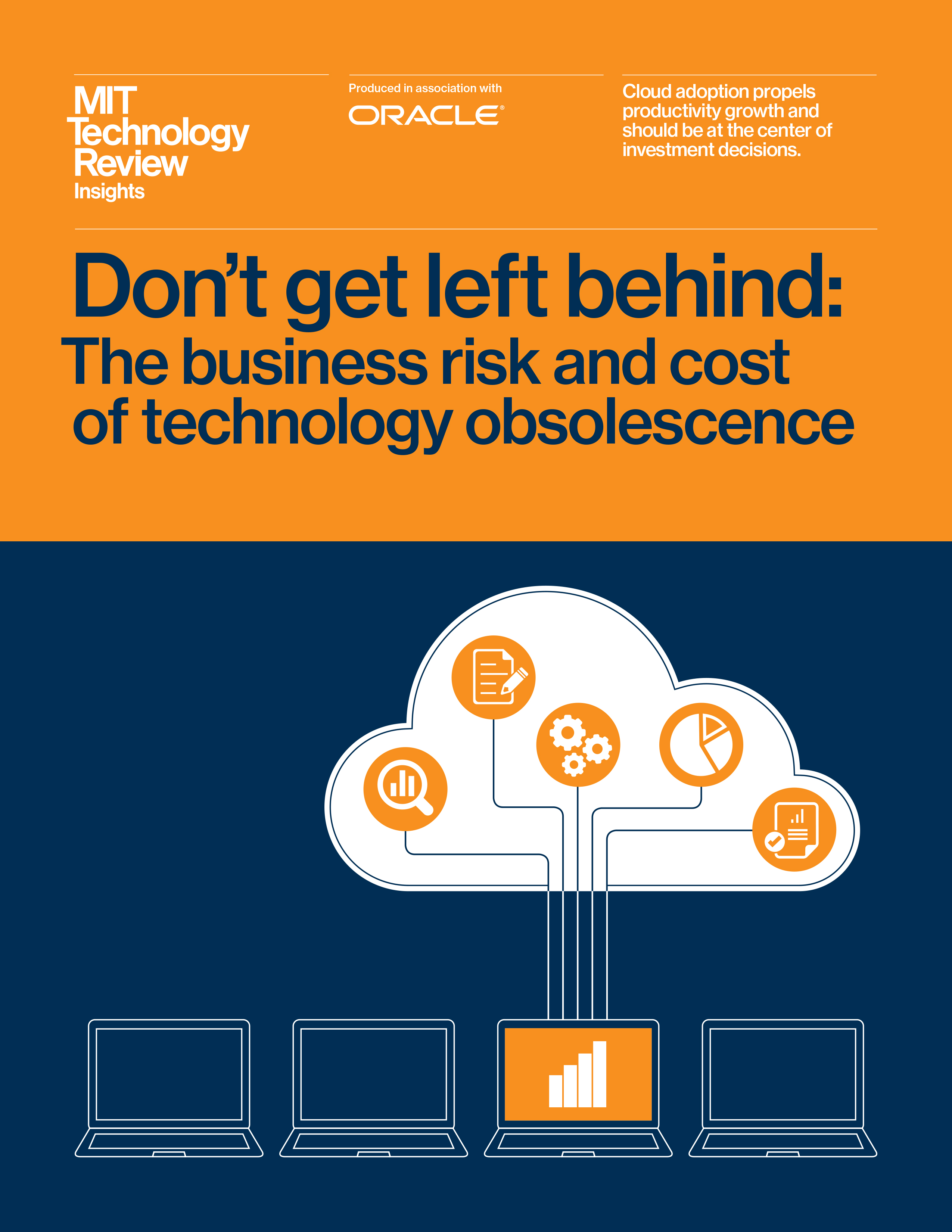Sponsored
Don’t get left behind: The business risk and cost of technology obsolescence

Produced in association withOracle
Every time a new generation of software is introduced, customers have to carefully weigh the benefits and costs of shifting to the new paradigm against the disadvantages of continuing to operate an increasingly obsolescent system.
However, the corporate decision to shift to cloud services—often from a classic enterprise resource planning system—brings up some new considerations. The shift to cloud services means that customers are connected to a limitless conveyor belt of best practices and new technologies.
Cloud services give companies a way to seamlessly introduce machine learning and artificial intelligence into their processes, without requiring an army of data scientists.
Don't get left behind: The business risk and cost of technology obsolescence
It is instructive to examine the decision-making process of the corporate leader faced with the choice between the existing legacy systems and the shift to cloud services. This decision is made within a particular market environment, including one in which competitors are adopting cloud services and using the latest technologies.
Because of the gains from new technologies and best practices, we can see the shift to cloud services as an increase in the rate of productivity growth. In effect, the use of cloud services reduces cost for a given level of sales, and therefore widens profit margins, with the benefit growing over time.
Faced with the advent of disruptive technologies such as cloud, companies often struggle to predict how quickly change is coming, or from which quarter. What is usually missing in cloud migration decisions is a grasp of the opportunity cost of postponing them, especially the impact that doing so has on the enterprise as a whole. Without a strategy that captures the cost, organizations risk forgoing opportunities for growth. And they are failing to capitalize on capabilities available to start solving big problems that threaten their viability.
A better understanding of the cost of obsolescence can help companies make their cloud investments at the right time. For those that are at risk of falling behind or worse, it is possible not only to close the productivity gap with leading-edge investments but to reverse the decline as well.
Deep Dive
Artificial intelligence
Large language models can do jaw-dropping things. But nobody knows exactly why.
And that's a problem. Figuring it out is one of the biggest scientific puzzles of our time and a crucial step towards controlling more powerful future models.
Google DeepMind’s new generative model makes Super Mario–like games from scratch
Genie learns how to control games by watching hours and hours of video. It could help train next-gen robots too.
What’s next for generative video
OpenAI's Sora has raised the bar for AI moviemaking. Here are four things to bear in mind as we wrap our heads around what's coming.
Stay connected
Get the latest updates from
MIT Technology Review
Discover special offers, top stories, upcoming events, and more.